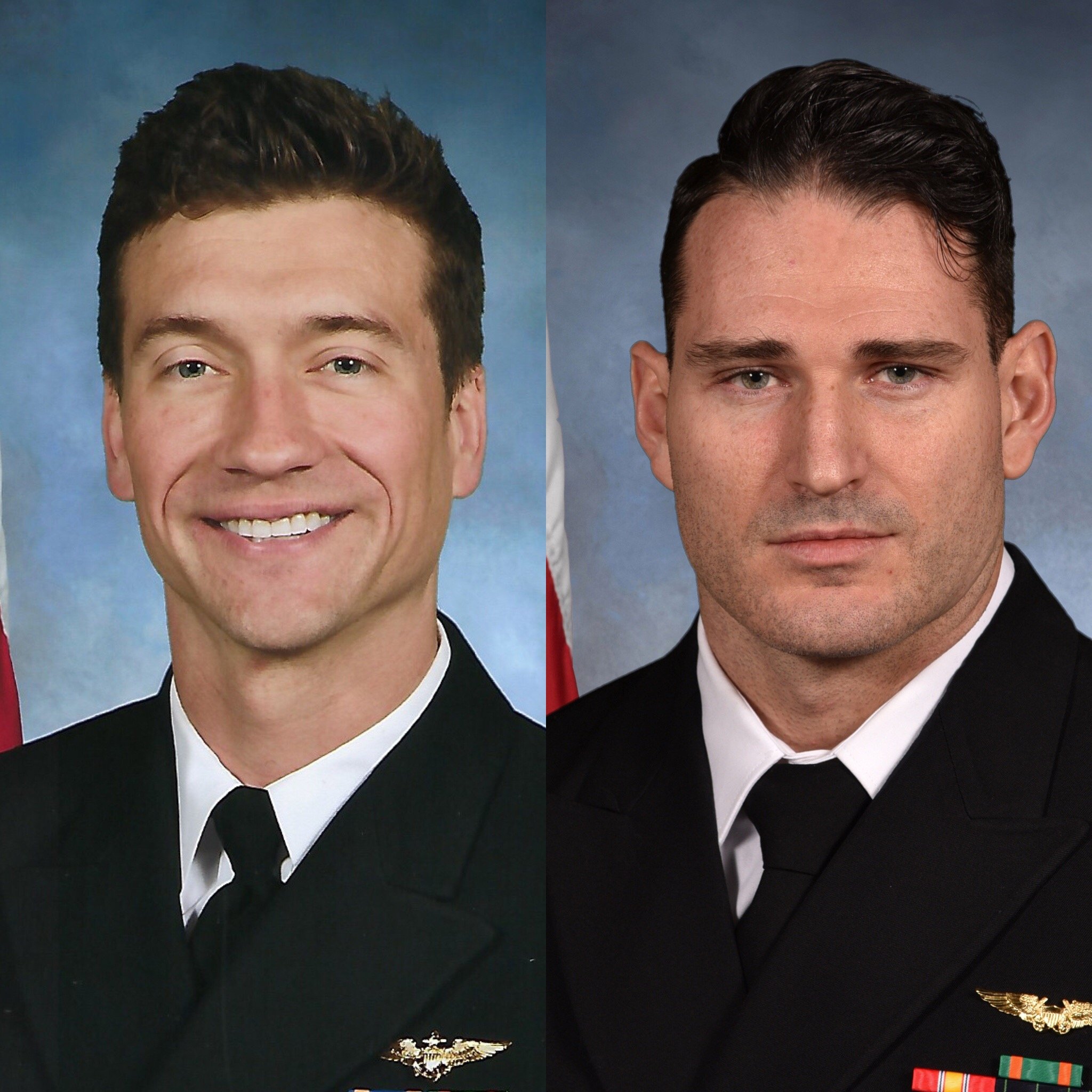
The Navy identified two aviators who were killed following a crash off Naval Air Station Key West, Fla. on Wednesday.
Lt. Cmdr. James Brice Johnson and Lt. Caleb Nathaniel King, both of Florida, died after their F/A-18F Super Hornet went down during a landing approach on Wednesday.
“Johnson, a Naval Aviator and 2007 graduate of the U.S. Air Force Academy, was piloting the jet when the incident occurred while King, a 2012 U.S. Naval Academy graduate, was serving as the Weapons Systems Operator,” read a statement from Naval Air Forces Atlantic.
Johnson and King were attached to Strike Fighter Attack Squadron (VFA) 213 “Black Lions” based at Naval Air Station Oceana, Va.
“The entire Blacklion Family is grieving the loss of two great Americans,” VFA-213’s Commanding Officer, Cmdr. Kevin Robb said in a statement.
“Lt. Cmdr. Johnson and Lt. King were phenomenal young men, exceptional naval aviators, and were living models of what honor, courage, and commitment really mean.”
The squadron was training at NAS Key West along with elements of Carrier Air Wing 8 at the time of the incident.
“Today, the squadron took the day off from training in order to grieve. The remaining squadrons in Carrier Air Wing 8 were briefed on the mishap and then resumed normal training operations,” read a Thursday statement AIRLANT.
The crash is currently under investigation. According to eyewitness accounts of the crash, while the Super Hornet was on approach a flash of fire surrounded the fighter.
“There was a fireball and it literally dropped out of the sky,” witness Barbie Wilson told The Virginian-Pilot.
The service has yet to recover the wreckage pending additional investigation.
“The F/A-18F remains in the water where it crashed and will stay there until a Mishap Investigation Board (MIB) conducts its investigation,” AIRLANT said in a statement.
“The MIB thoroughly examines previous aircraft maintenance, number of hours flown on the aircraft, physical condition of the aircrew and their activities previous to the accident.”
The Navy has also brought in a team to prevent environmental damage from the accident or the wreckage
“The goal is to restore the impact to the pre-existing condition and to coordinate the overall Navy response. This includes close coordination with other Navy entities, state, local and federal stakeholders and possibly outside agency contractors,” read the statement from AIRLANT.
VFA-213 is slated to return to Naval Air Station Oceana by the end of the month.





